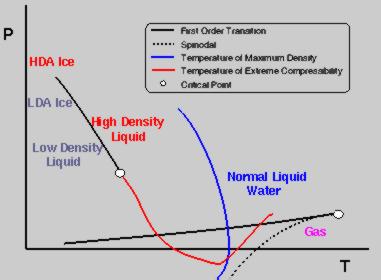
Why Simulate Water?
When water is cooled below the freezing point, it naturally tends to
nucleate to form ice. This is in large part due to inhomogenities in
the liquid that provide a nucleation site. Thus, to study deeply
supercooled water, people have turned to simulations. Simulations also
allow one to simulate strecthed states, which are difficult to obtain
experimentally. Click here to try out a water simulation you can run
over the web!
The Coulomb force is responsible for hydrogen bonding in water, and
is a long range force. Therefore we cannot employ simple cutoff methods
used in Lennard-Jones type systems. This leaves us with an order N^2
problem, a very large computational overhead. These methods have been
used successfully in the past, but are limited so system of size
(roughly) 216 particles. Naturally it is hard to pick out bond networks
for a cube of 6 molecules per side.
Fast Multipole Methods are used becuase they reduce the problem to
order N. This is achieved by breaking space up into a heirarchial
tree. For cells in the tree that are well-separated, we can compute the
electrostatic interactions via a multipole expansion. This reduces the
calculations a tremendous amount without losing significant
accuracy. For more of fast multipole methods, see the refernece section.
Fast Multipole Methods?
